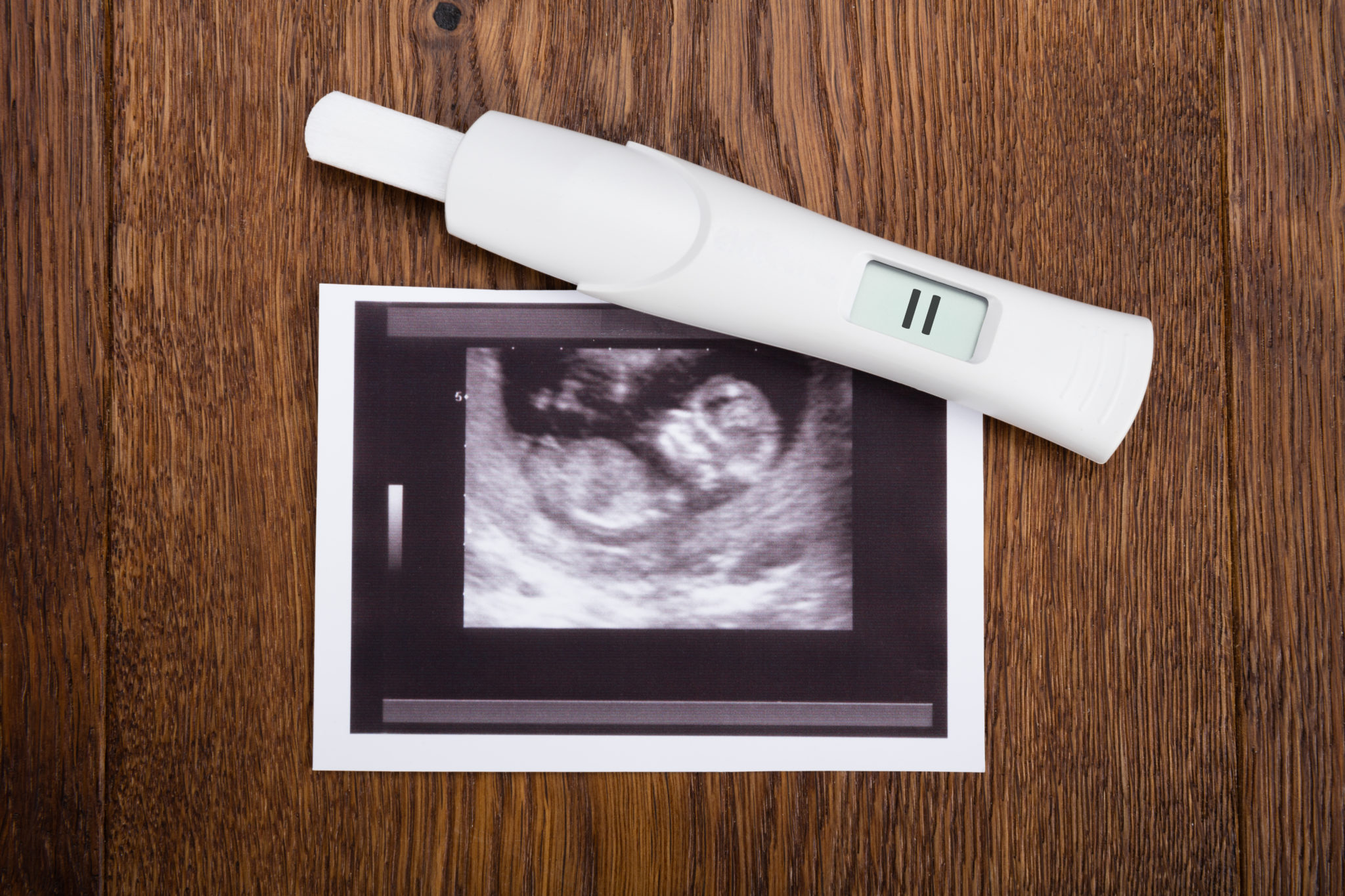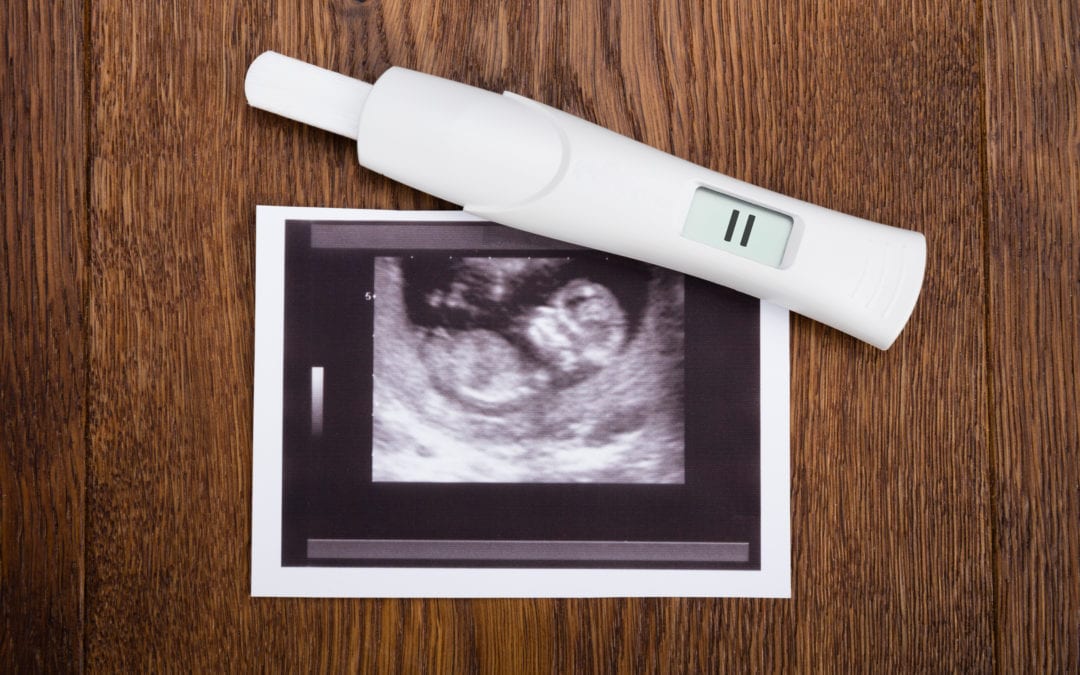
Congratulations! With the appearance of those two pink lines on the pregnancy test, you found out that your body, heart and life will be forever changed. Though you may still be processing the fact that you are expecting a little one, your body is already hard at work, nourishing the growing baby that will arrive in about eight short months.
If you’ve already perused the baby aisles or flipped through a pregnancy book, you know that preparing for a baby can be overwhelming. Use these tips and checklists to know what to expect this first trimester and what you can do to prepare for your little one’s arrival.
Month One
Changes in You
Though you probably won’t even find out your pregnant until you are a month along, your body has been preparing for a baby by lining your uterus with nutrient-rich blood and releasing an egg during ovulation. Once this egg was fertilized, the cells began rapidly dividing. Your body makes a placenta, which will deliver nutrients to your baby throughout the pregnancy. By the end of the month, you could be experiencing some pregnancy symptoms, which may include:
- Sore breasts
- Tiredness
- Bloating
- Light cramping
- Moodiness
Changes in Baby
The fertilized egg has begun to grow already. A water-tight sac, called the amniotic sac, forms around the fertilized egg in order to cushion and protect the growing embryo. By the end of the month, the embryo is about 1/4 of an inch long and has begun to develop the eyes, mouth, throat and lower jaw.
What to Do
- Figure out your due date. Simply take the date of your last menstrual period (LMP) and add 280 days (40 weeks). For example, if the start of your LMP was April 14, your baby will be due on January 19. There are many online due date calculators that can help you with this.
- If you haven’t already, start taking your prenatal vitamins. Make sure that your vitamins contain at least 400 micrograms of folic acid, which has been shown to reduce birth defects.
- Quit smoking or drinking if you haven’t already done so.
- Start looking around for an OBGYN or a midwife.
- Check with your doctor about any medications you are currently taking to ensure they are safe for pregnancy.
- If you have a cat, have your partner take over cleaning the litter box. Pregnant women are susceptible to parasites found in cat feces that can cause toxoplasmosis, which can harm your growing little one.
Month Two
Changes in You
If you don’t know already, your pregnancy will definitely be confirmed by the second month. Your blood volume has increased and your heart is pumping 50 percent more per minute than it did prior to pregnancy; your kidneys are also working overtime. You may notice increased nausea and tiredness. Your breasts may go up several sizes during pregnancy in order to prepare you for breastfeeding or breast pumping.
Changes in Baby
By the end of the second month, the fetus’ neural system is well-formed, its heart is pumping regularly, facial features (including tiny ears!) have begun to form and tiny buds that will eventually grow into legs, feet, arms and hands are making an appearance. The umbilical cord has developed to supply the fetus with nutrients and oxygen. The brain, lungs, digestive organs, neural system, appendix and kidneys have also formed by this point.
What to Do
- Make an appointment with your midwife or OBGYN. Most providers typically want to see women between six and 12 weeks.
- Get a new supportive bra. You may have already noticed that your breasts have begun to change; a supportive bra will help with the pain.
- Try eating small meals or snacks throughout the day to minimize nausea from morning sickness.
- Exercise every day to keep your weight gain in check and to help tone your body for an easier delivery.
Month Three
Changes in You
By this point, you may have gained a couple of pounds from being extra hungry or you may have lost a little weight. Either is okay as long as they aren’t drastic. You have probably gone to the doctor and were able to hear the sweet swooshing of your growing baby’s heart rate, which can make the pregnancy seem more real (and scary!).
Changes in Baby
By the end of this month, the fetus is fully formed and looks like a baby. The sex organs are developing but won’t be distinguishable on an ultrasound. Tiny fingernails and toenails are forming on the fingers and hands and tiny tooth buds are forming. Your little one is about three inches long by the end of the third month.
What to Do
- Start doing Kegel exercises. The weight of the growing uterus and fetus will put pressure on your bladder. This can cause occasional leaks. Kegel exercises can help.
- Prepare to tell your family, friends and boss about your pregnancy if you haven’t already done so. By the end of the third month, your risk of miscarriage decreases significantly, so many women choose to announce their pregnancy now.
- Talk with your doctor about any diagnostic tests that need to be done between weeks 10 and 14 and schedule them now.
- Schedule an appointment with your dentist. Pregnancy hormones can cause changes in the gums and teeth, which can include making them bleed more easily. Keep up with your dental health by seeing your dental provider at least once during your pregnancy.
By the end of month three, you have reached the end of the first trimester. Congratulations! Though you may still feel pretty miserable with early pregnancy symptoms, you are about to enter the next trimester of pregnancy where most women experience relief and began to enjoy being pregnant. Take a deep breath, rub that growing belly of yours and get ready for the next stages of pregnancy.


 Complete Our Simple Online Form
Complete Our Simple Online Form We’ll Handle All The Paperwork
We’ll Handle All The Paperwork Receive Your Free Ameda Pump
Receive Your Free Ameda Pump